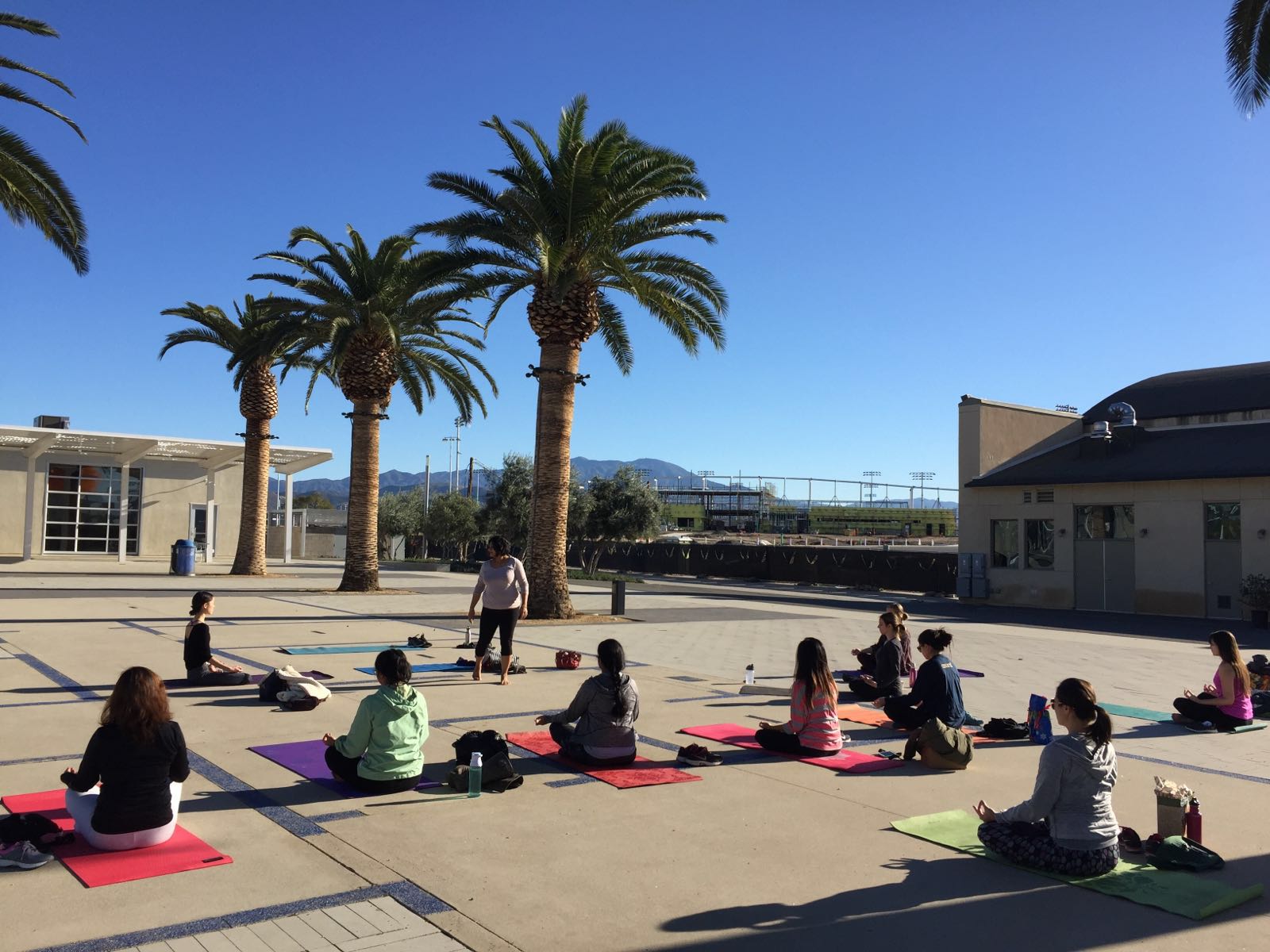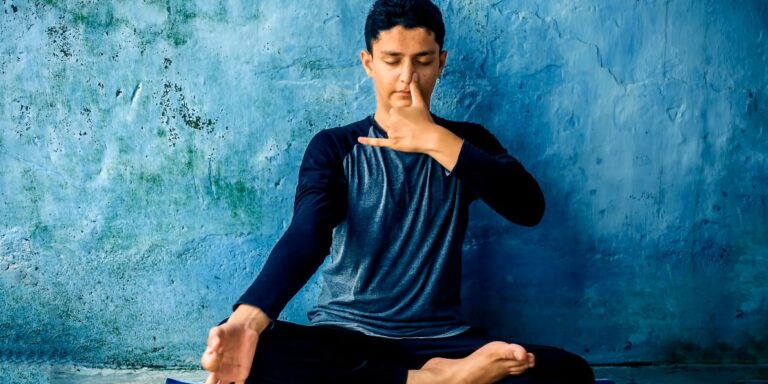Recent findings suggest a close link between long-term meditation practices and the structure of the corpus callosum. Prior analyses, however, have focused on estimating mean fractional anisotropy (FA) within two large pre-defined callosal tracts only. Additional effects might exist in other, non-explored callosal regions and/or with respect to callosal attributes not captured by estimates of FA. To further explore callosal features in the framework of meditation, we analyzed 30 meditators and 30 controls, carefully matched for sex, age, and handedness. We applied a multimodal imaging approach using diffusion tensor imaging (DTI) in combination with structural magnetic resonance imaging (MRI). Callosal measures of tract-specific FA were complemented with other global (segment-specific) estimates as well as extremely local (point-wise) measures of callosal micro- and macro-structure. Callosal measures were larger in long-term meditators compared to controls, particularly in anterior callosal sections. However, differences achieved significance only when increasing the regional sensitivity of the measurement (i.e., using point-wise measures versus segment-specific measures) and were more prominent for microscopic than macroscopic characteristics (i.e., callosal FA versus callosal thickness). Thicker callosal regions and enhanced FA in meditators might indicate greater connectivity, possibly reflecting increased hemispheric integration during cerebral processes involving (pre)frontal regions. Such a brain organization might be linked to achieving characteristic mental states and skills as associated with meditation, though this hypothesis requires behavioral confirmation. Moreover, longitudinal studies are required to address whether the observed callosal effects are induced by meditation or constitute an innate prerequisite for the start or successful continuation of meditation.
ENHANCED BRAIN CONNECTIVITY IN LONG-TERM MEDITATION PRACTITIONERS
Eileen Luders 1, Kristi Clark, Katherine L Narr, Arthur W Toga
Affiliations expand
- PMID: 21664467
- PMCID: PMC3176828
ABSTRACT
Very little is currently known about the cerebral characteristics that underlie the complex processes of meditation as only a limited number of studies have addressed this topic. Research exploring structural connectivity in meditation practitioners is particularly rare. We thus acquired diffusion tensor imaging (DTI) data of high angular and spatial resolution and used atlas-based tract mapping methods to investigate white matter fiber characteristics in a well-matched sample of long-term meditators and controls (n=54). A broad field mapping approach estimated the fractional anisotropy (FA) for twenty different fiber tracts (i.e., nine tracts in each hemisphere and two inter-hemispheric tracts) that were subsequently used as dependent measures. Results showed pronounced structural connectivity in meditators compared to controls throughout the entire brain within major projection pathways, commissural pathways, and association pathways. The largest group differences were observed within the corticospinal tract, the temporal component of the superior longitudinal fasciculus, and the uncinate fasciculus. While cross-sectional studies represent a good starting point for elucidating possible links between meditation and white matter fiber characteristics, longitudinal studies will be necessary to determine the relative contribution of nature and nurture to enhanced structural connectivity in long-term meditators.
IS MEDITATION ASSOCIATED WITH ALTERED BRAIN STRUCTURE? A SYSTEMATIC REVIEW AND META-ANALYSIS OF MORPHOMETRIC NEUROIMAGING IN MEDITATION PRACTITIONERS
Kieran C R Fox 1, Savannah Nijeboer 2, Matthew L Dixon 2, James L Floman 3, Melissa Ellamil 2, Samuel P Rumak 2, Peter Sedlmeier 4, Kalina Christoff 5
Affiliations expand
- PMID: 24705269
- DOI: 10.1016/j.neubiorev.2014.03.016
ABSTRACT
Numerous studies have begun to address how the brain’s gray and white matter may be shaped by meditation. This research is yet to be integrated, however, and two fundamental questions remain: Is meditation associated with altered brain structure? If so, what is the magnitude of these differences? To address these questions, we reviewed and meta-analyzed 123 brain morphology differences from 21 neuroimaging studies examining ∼300 meditation practitioners. Anatomical likelihood estimation (ALE) meta-analysis found eight brain regions consistently altered in meditators, including areas key to meta-awareness (frontopolar cortex/BA 10), exteroceptive and interoceptive body awareness (sensory cortices and insula), memory consolidation and reconsolidation (hippocampus), self and emotion regulation (anterior and mid cingulate; orbitofrontal cortex), and intra- and interhemispheric communication (superior longitudinal fasciculus; corpus callosum). Effect size meta-analysis (calculating 132 effect sizes from 16 studies) suggests a global ‘medium’ effect size (Cohen’s d¯=0.46; r¯=.19). Publication bias and methodological limitations are strong concerns, however. Further research using rigorous methods is required to definitively link meditation practice to altered brain morphology.
YOGA IMPROVES MITOCHONDRIAL HEALTH AND REDUCES SEVERITY OF AUTOIMMUNE INFLAMMATORY ARTHRITIS: A RANDOMIZED CONTROLLED TRIAL
Surabhi Gautam 1, Uma Kumar 2, Manoj Kumar 1, Deeksha Rana 1, Rima Dada 3
Affiliations expand
- PMID: 33741520
ABSTRACT
Background: Oxidative stress (OS) and mitochondrial alterations have been implicated in the pathogenesis of rheumatoid arthritis (RA). Various environmental triggers like air pollutants, smoking, unhealthy social habits and sedentary lifestyle induce OS, which may compromise mitochondrial integrity. This trial was designed to explore the effect of 8-weeks yoga practice on mitochondrial health and disease severity in an active RA group compared with a usual-care control group.
Methods: A total of 70 subjects were randomized into two groups: yoga group and non-yoga group. Mitochondrial health was assessed by calculation of mitochondrial DNA copy number (mtDNA-CN), OS markers, mitochondrial activity, mitochondrial membrane potential (ΔΨm), circadian rhythm markers and transcripts associated with mitochondrial integrity: AMPK, TIMP-1, KLOTHO, SIRT-1, and TFAM. Parameters of disease activity and disability quotient were also assessed by disease activity score – erythrocyte sedimentation rate (DAS28-ESR) and health assessment questionnaire-disability index (HAQ-DI), respectively.
Results: In yoga group, there was a significant upregulation of mtDNA-CN, mitochondrial activity markers, ΔΨm, and transcripts that maintain mitochondrial integrity after 8-weeks of yoga. There was optimization of OS markers, and circadian rhythm markers post 8-weeks practice of yoga. Yoga group participants showed significant improvements in DAS28-ESR (p < 0.05) and HAQ-DI (p < 0.05) over the non-yoga group.
Conclusion: Adoption of yoga by RA patients holds the key to enhance mitochondrial health, improve circadian rhythm markers, OS marker regulation, upregulation of transcripts that maintain mitochondrial integrity, reduce disease activity and its associated consequences on health outcome and hence can be beneficial as an adjunct therapy.
Keywords: DAS28-ESR; HAQ-DI; Inflammation; Mitochondrial integrity; Mitochondrial membrane potential; Rheumatoid arthritis; Yoga.
IMPACT OF YOGA BASED MIND-BODY INTERVENTION ON SYSTEMIC INFLAMMATORY MARKERS AND CO-MORBID DEPRESSION IN ACTIVE RHEUMATOID ARTHRITIS PATIENTS: A RANDOMIZED CONTROLLED TRIAL
Surabhi Gautam 1, Madhuri Tolahunase 1, Uma Kumar 2, Rima Dada 1
Affiliations expand
- PMID: 30714983
ABSTRACT
Background: Recovery of patients with rheumatoid arthritis (RA) depends on several physical and psychological factors, besides pharmacological treatment. Co-morbid depression adversely affects the outcome in RA. Usual medical therapies have a limited scope and fail to cure the psychological component of the disease. With advanced therapeutic options, achieving a state of remission has become the treatment goal, yoga based mind body intervention (MBI) may provide a holistic approach in its treatment dimension. Hence, MBIs are the need of hour as majority of diseases have a psychosomatic component.
Objective: To explore the effect of Yoga based MBI on disease specific inflammatory markers and depression severity in active RA patients on routine disease modifying anti-rheumatic drugs (DMARDs) therapy.
Methods: A total of 72 RA patients were randomized into 2 groups: yoga group (yoga with DMARDs) and control group (DMARDs only). Blood samples were collected pre and post intervention for primary outcome measurements of systemic biomarkers. Disease activity score 28, erythrocyte sedimentation rate (DAS28ESR) and health assessment questionnaire disability index (HAQ-DI) were used to assess disease activity and functional status respectively at pre and post intervention time-points. Secondary outcome, depression severity, was assessed by Beck Depression Inventory II scale (BDI-II) at 2 weekly intervals during 8 weeks of the study interventional plan.
Results: After 8 weeks of yoga based MBI, there was significant decrease in the severity of RA as seen by reduction in levels of various systemic inflammatory markers as well as in DAS28ESR (p-value <0.0001; effect size = 0.210) and HAQ-DI (p-value 0.001; effect size = 0.159). Also, yoga group experienced a statistically significant time dependent step-wise decline in depression symptoms over the period of 8 weeks as compared to control group (p-value <0.0001; effect size = 0.5). Regression analysis showed greater reduction in the scores of BDI-II with DAS28ESR (R2 = 0.426; p < 0.0001) and HAQ-DI (R2 = 0.236; p = 0.003) in yoga group.
Conclusions: Yoga, a mind body intervention re-established immunological tolerance by aiding remission at molecular and cellular level along with significant reduction in depression. Thus in this severe autoimmune inflammatory arthritis with a major psychosomatic component, yoga can be used as a complementary/adjunct therapy.



